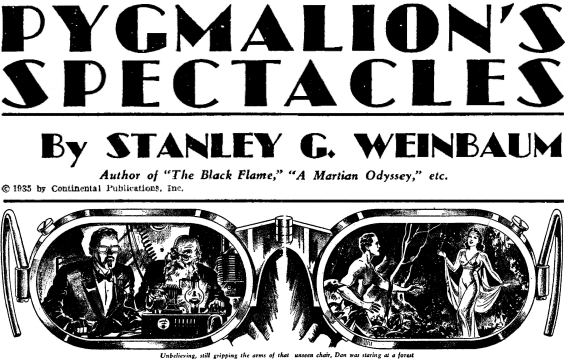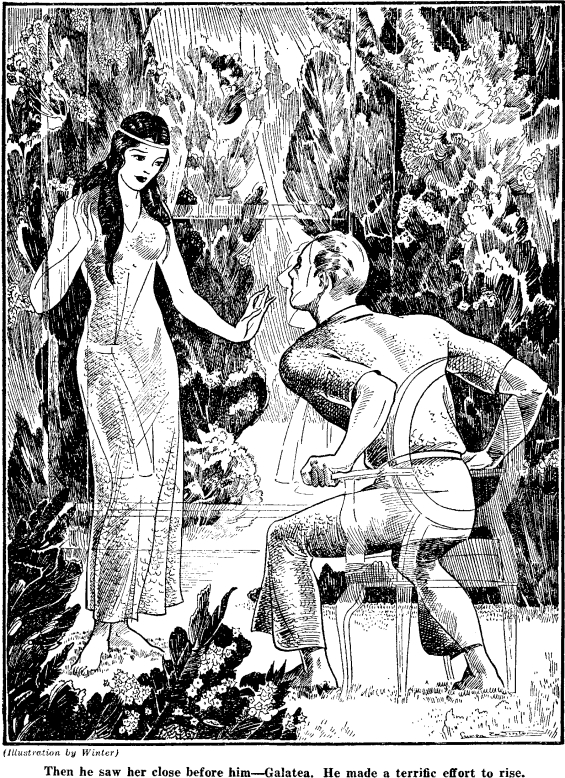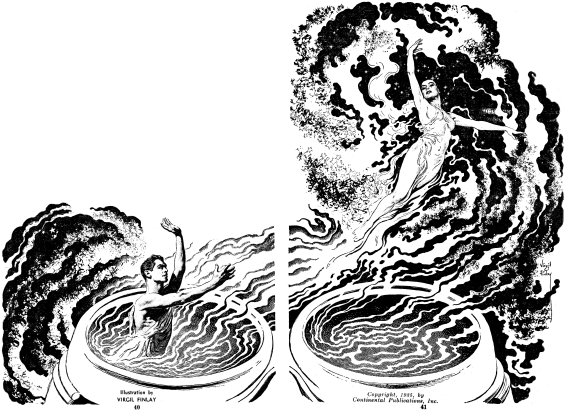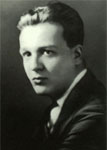

A Martian Odyssey is a classic of alien human interaction. Isaac Asimov said of it and of Weinbaum:
“With this single story [A Martian Odyssey], Weinbaum was instantly recognized as the world’s best living science fiction writer, and at once almost every writer in the field tried to imitate him.”
It is also argued that this is the first story to satisfy Astounding editor John W. Campbell’s famous challenge:
“Write me a creature who thinks as well as a man, or better than a man, but not like a man.”
When it was republished, just 4 years later, in Startling Stories, A Martian Odyssey was added to the “Scientifiction Hall Of Fame”:
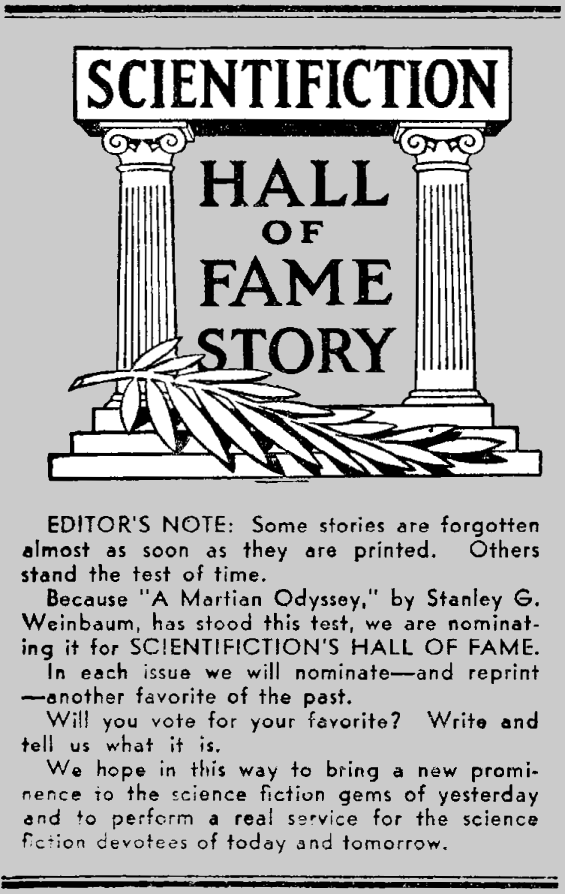
And with that that same printing was this extolling editorial explanation:
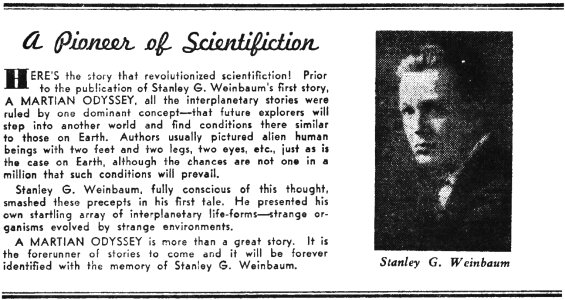
 A Martian Odyssey
A Martian Odyssey
By Stanley G. Weinbaum; Read by Gregg Margarite
1 |MP3| – Approx. 58 Minutes [UNABRIDGED]
Publisher: LibriVox.org
Published: January 13, 2009
Early in the twenty-first century, nearly twenty years after the invention of atomic power and ten years after the first lunar landing, the four-man crew of the Ares has landed on Mars in the Mare Cimmerium. A week after the landing, Dick Jarvis, the ship’s American chemist, sets out south in an auxiliary rocket to photograph the landscape. Eight hundred miles out, the engine on Jarvis’ rocket gives out, and he crash-lands into one of the Thyle regions. Rather than sit and wait for rescue, Jarvis decides to walk back north to the Ares. First published in Wonder Stories, July 1934.
Here’s an illustrated |PDF| made from the original publication in Wonder Stories.
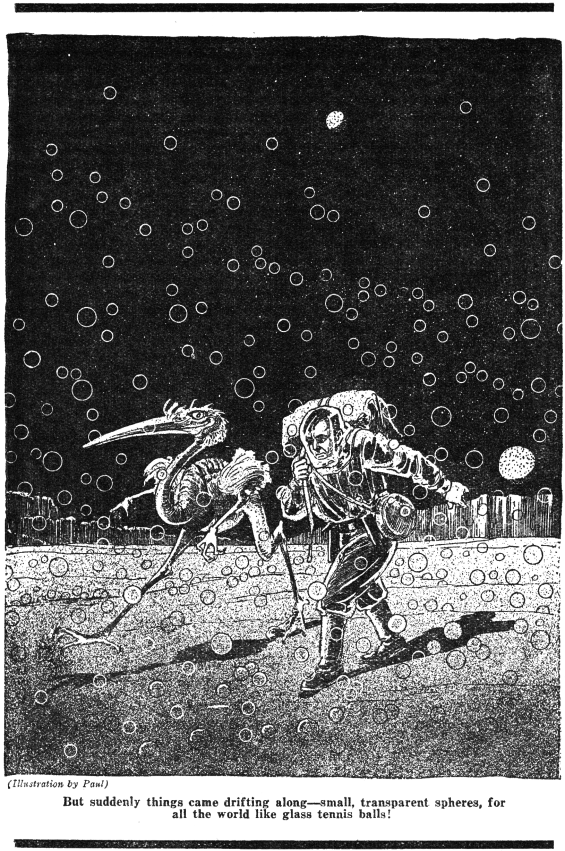
Posted by Jesse Willis
